All mammals are endothermic (warm-blooded), have some fur or hair on their body, and feed their young milk. They have a bony skeleton with a backbone, and their lower jaw, made of one bone, hinges directly onto the skull. Mammals breathe using lungs. A few mammals lay eggs, and some carry their young in pouches, but most have a placenta and give birth to live young. Mammals are found all over the world, on land, in the air, and in water.
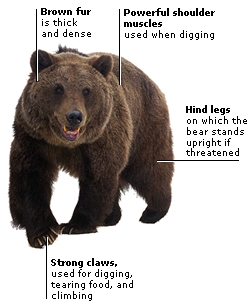
The brown bear is an omnivore, eating plants and animals. It walks on all fours, with its heel on the ground. It is a placental mammal, which means that the young are able to develop and grow inside the female’s body. The cubs look like tiny adults when born, but are helpless and stay with their mother for at least two years.
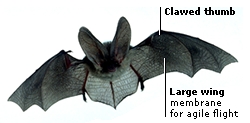
Bats are the only mammals that fly. A bird’s wing is made up of the whole of the forelimb, but in bats the flight membrane stretches between its very long fingers. Most bats feed at night and rest, often in large groups, during the day.
CLASS: MAMMALIA
Class: Monotremata
Features: lay eggs, short legs, small head, tiny eyes
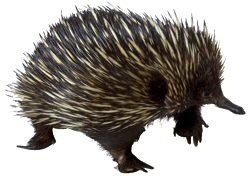
Class: Diprotodonta
Features: young born at early stage and cared for in pouch
Class: Perissodactyla
Features: leg’s weight on central toe
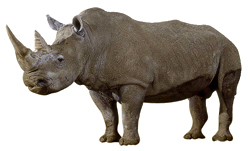
Class: Carnivora
Features: carnassial (sharp, cheek) teeth for cutting flesh
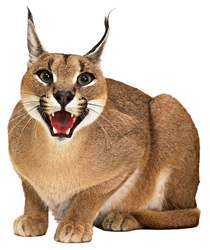
Class: Cetacea
Features: move tail up and down to swim
Class: Primates
Features: large brain, forward-facing eyes
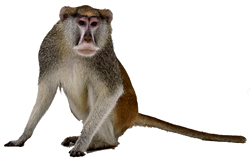
Class: Rodentia
Features: incisor teeth grow continuously, most have good sense of smell and hearing
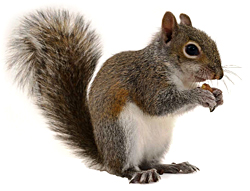
No comments:
Post a Comment